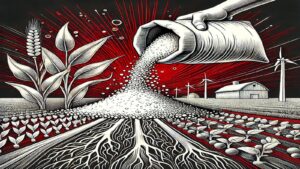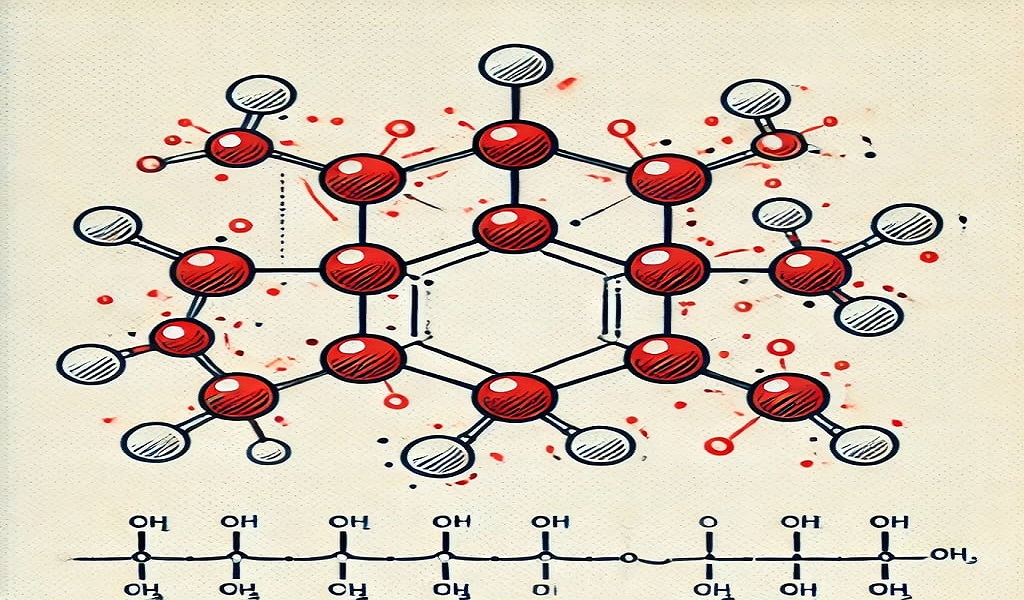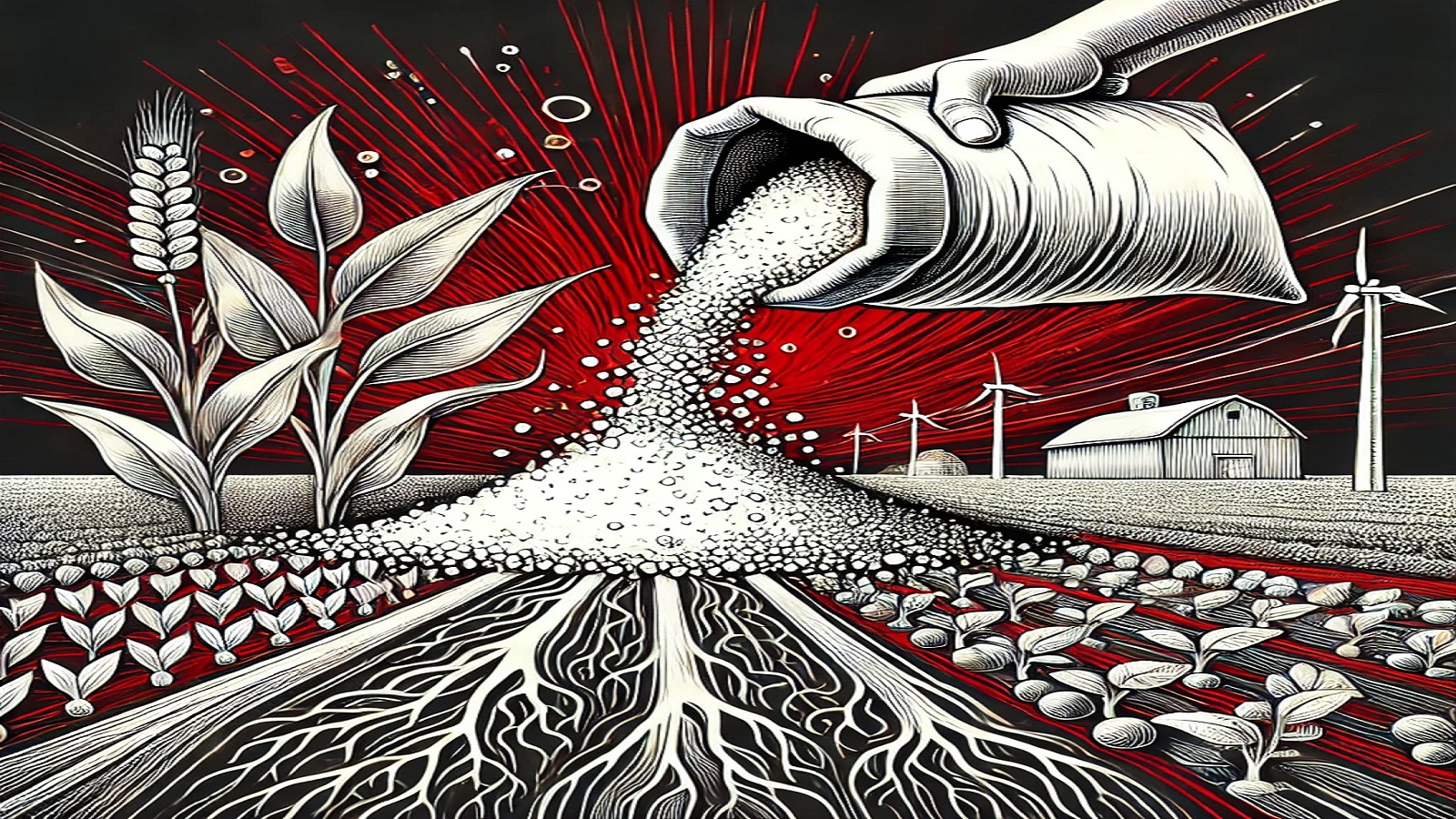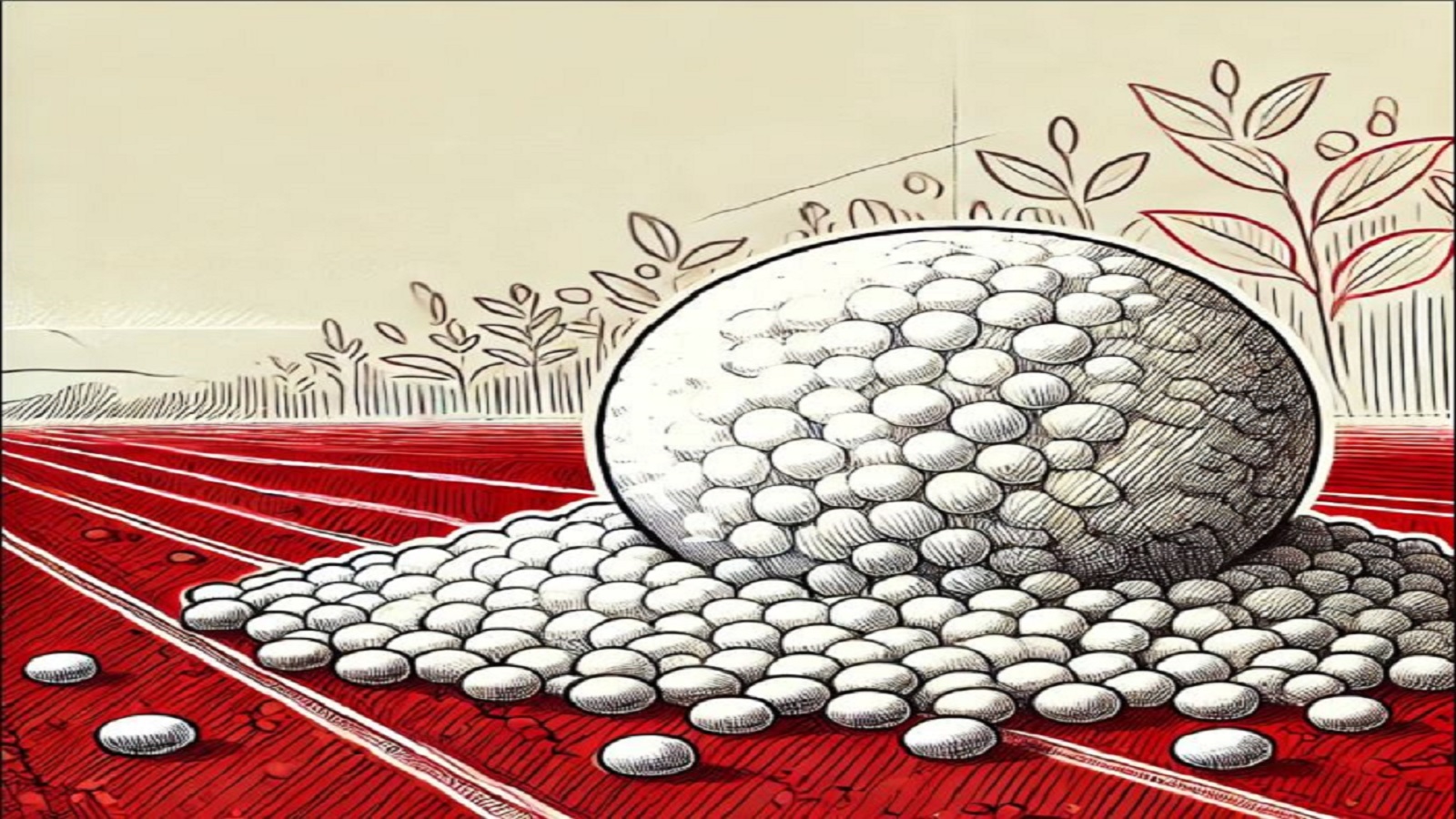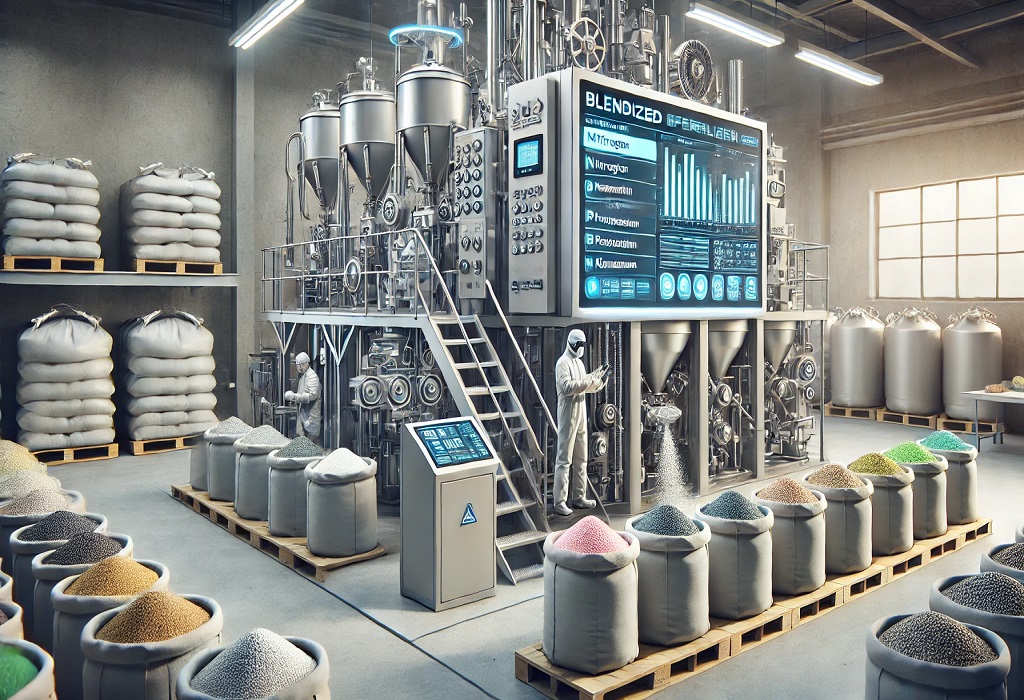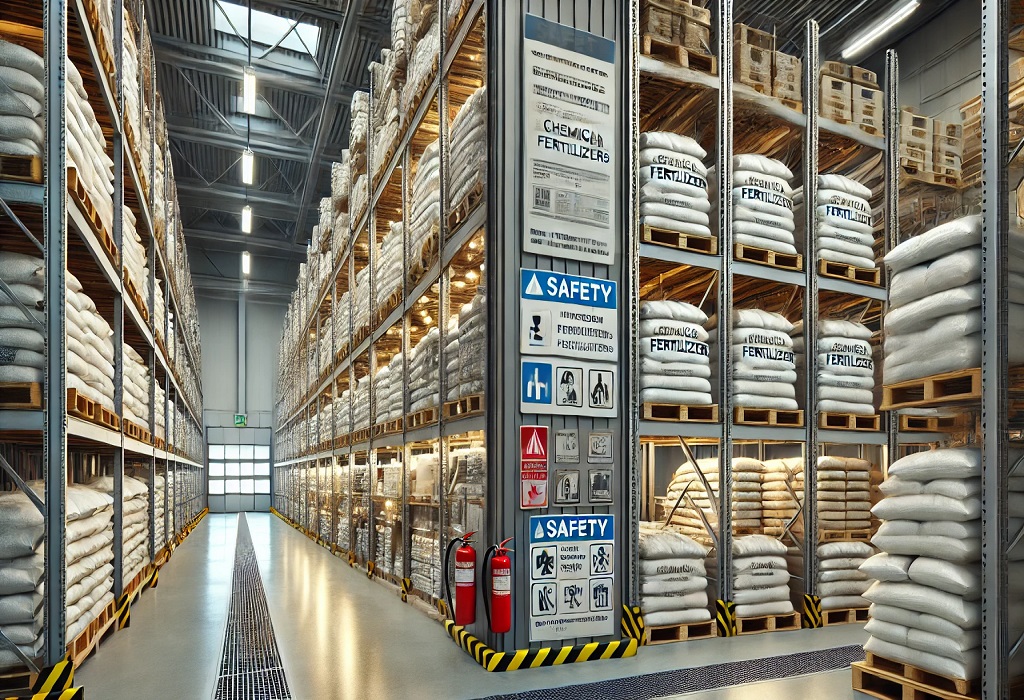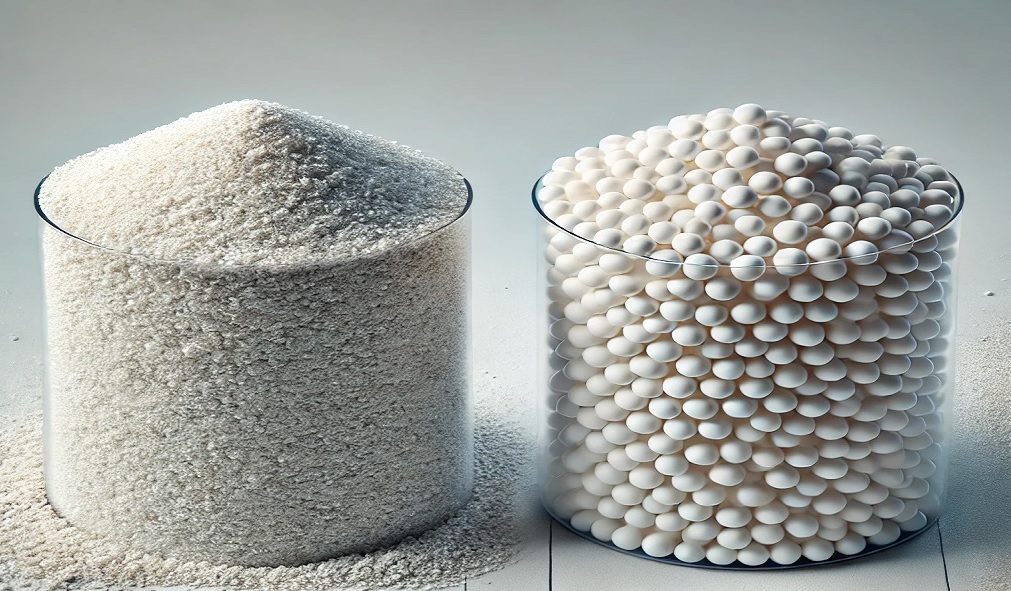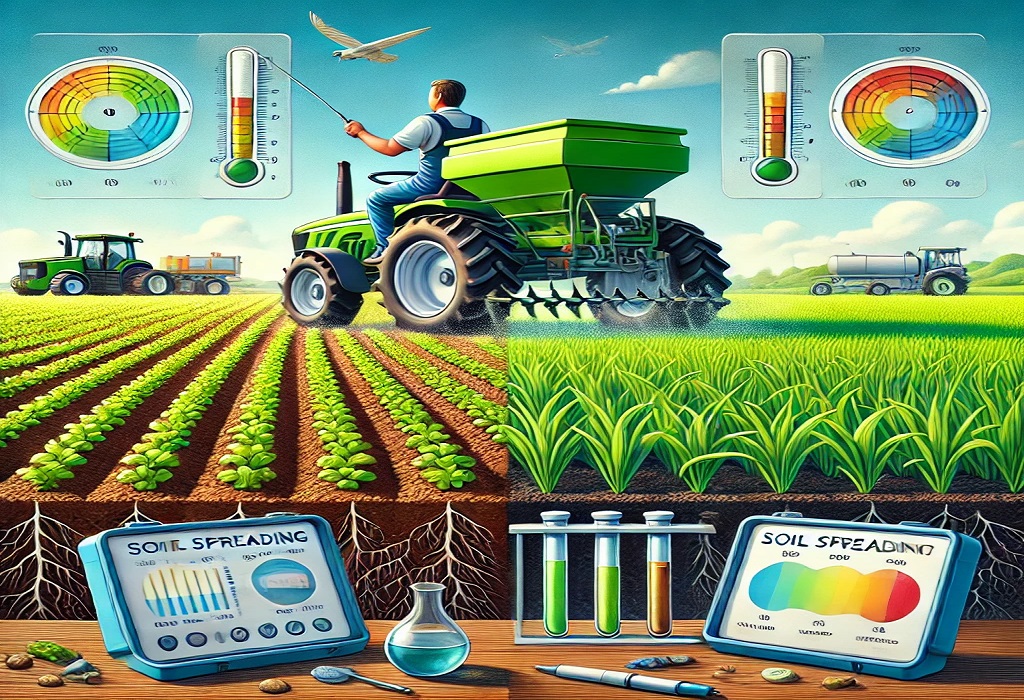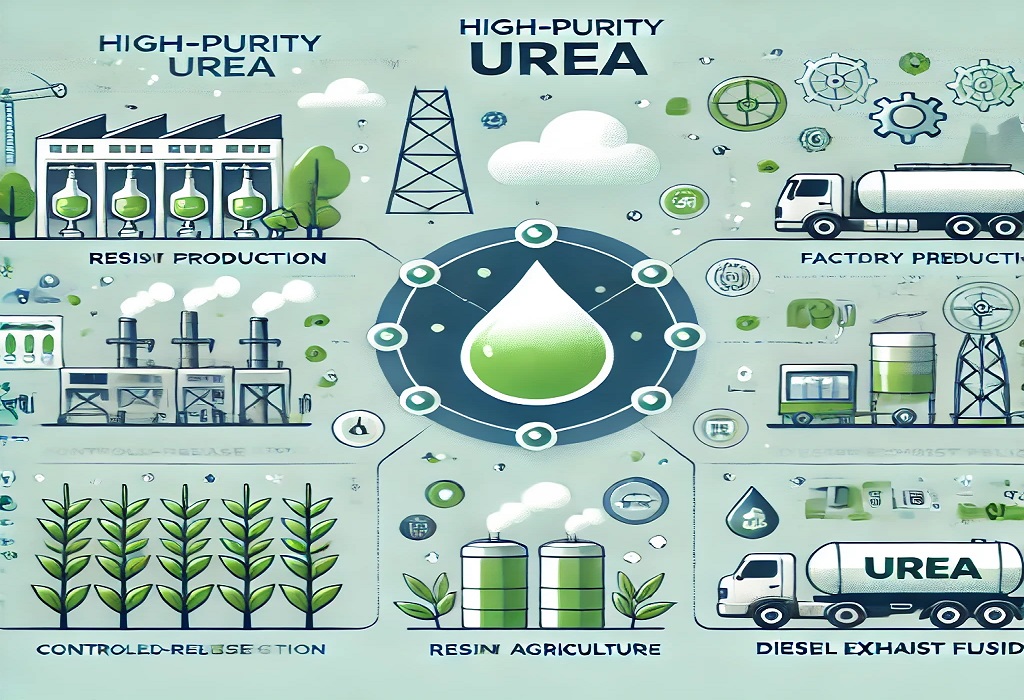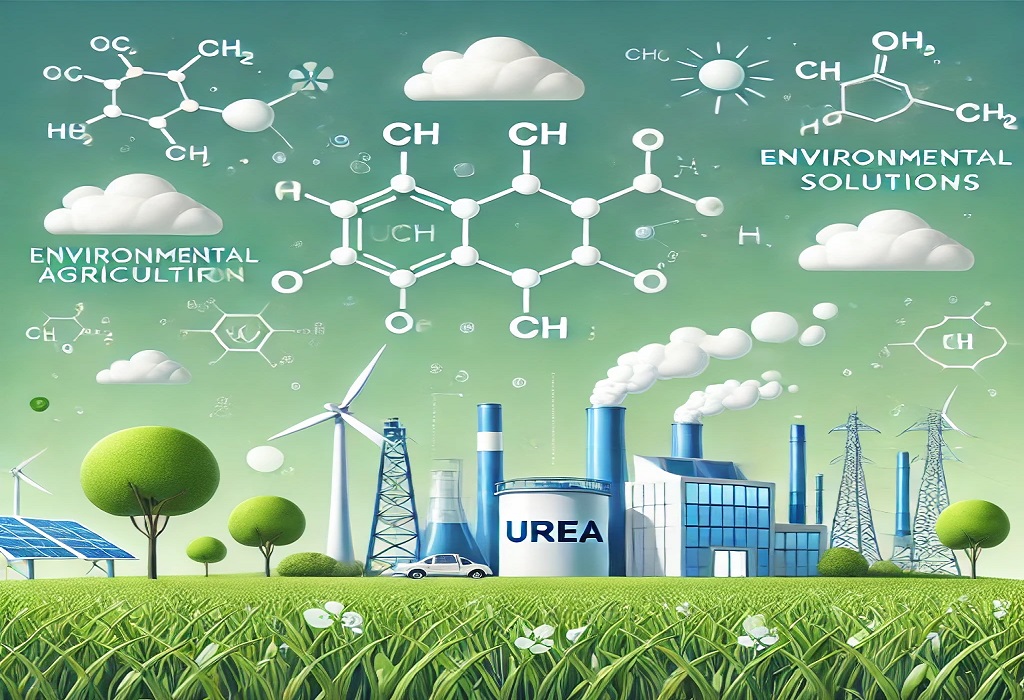Granular Urea Analysis
| Property | Units | Test Method | Value |
|---|---|---|---|
| Nitrogen Content | wt % | ISO 5315 | 46 MIN |
| Moisture | wt % | ISO 2753 | 0.5 MAX |
| Biuert | wt % | ISO 2754 | 1 MAX |
| Particle Size (2-4 mm) | ISO 8397 | 90 MIN | |
| Formaldehyde | wt % | BS 6806-1 | 0.55 MAX |
Technical Urea Analysis
| Property | Units | Test Method | Value | |
|---|---|---|---|---|
| Nitrogen Content | wt % | ISO 5315 | 46 MIN | |
| Moisture | wt % | ISO 2753 | 0.3 MAX | |
| Biuert | wt % | ISO 2754 | 1 MAX | |
| Particle Size (1-2.84 mm) | ISO 8397 | 90 MIN |
Prilled Urea Analysis
| Property | Units | Test Method | Value | |
|---|---|---|---|---|
| Nitrogen Content | wt % | ISO 5315 | 46 MIN | |
| Moisture | wt % | ISO 2753 | 0.3 MAX | |
| Biuert | wt % | ISO 2754 | 1 MAX | |
| Particle Size (1-2.84 mm) | ISO 8397 | 90 MIN |
Blending for Customized Fertilizers
In modern agriculture, one-size-fits-all fertilizers may not meet the unique nutrient demands of different crops and soils. Customized fertilizers, created through precision blending, address this challenge. This article explores the benefits, processes, and applications of blending fertilizers, highlighting how it enhances crop productivity and efficiency.
Table of Contents
- What is Fertilizer Blending?
- Benefits of Customized Fertilizers
- The Fertilizer Blending Process
- Popular Methods of Blending
- Applications in Agriculture
- Best Practices for Fertilizer Blending
- FAQs
What is Fertilizer Blending?
Fertilizer blending is the process of combining two or more types of fertilizers to create a custom mix tailored to specific agricultural needs. This allows farmers to deliver the precise nutrient balance required for different crops, soil types, or growth stages.
Benefits of Customized Fertilizers
1. Enhanced Nutrient Efficiency
Custom blends match the exact nutrient requirements of crops, reducing wastage and maximizing effectiveness.
2. Improved Crop Yields
With precise nutrient delivery, plants grow healthier and yield better harvests.
3. Cost Savings
By blending only the necessary components, farmers avoid over-purchasing pre-mixed fertilizers.
4. Environmental Protection
Custom blends minimize nutrient runoff and leaching, reducing environmental pollution.
5. Flexibility
Farmers can adjust blends based on real-time soil and crop data.
The Fertilizer Blending Process
1. Soil and Crop Analysis
Understanding the nutrient content of soil and the specific needs of crops is the first step. Farmers often use soil tests and crop nutrient maps.
2. Selection of Fertilizer Components
Choose from base fertilizers like nitrogen (urea), phosphorus (DAP), or potassium (MOP).
3. Proportional Mixing
Using precision equipment, the chosen fertilizers are mixed in exact ratios to create the blend.
4. Testing and Quality Control
The blend is tested for uniformity and effectiveness before distribution or application.
Popular Methods of Blending
1. Batch Blending
- Process: Fertilizers are mixed in batches using mechanical blenders.
- Advantages: Cost-effective for small-scale operations.
2. Continuous Blending
- Process: Fertilizers are mixed continuously as they are loaded or dispensed.
- Advantages: Ideal for large-scale operations needing high volumes.
3. Precision Blending
- Process: Advanced technologies ensure the exact nutrient composition in every granule.
- Advantages: Uniform nutrient distribution and high accuracy.
Applications in Agriculture
1. Crop-Specific Blends
- Corn requires higher nitrogen levels, while potatoes benefit from potassium-rich blends.
2. Soil-Type Specific Blends
- Sandy soils may need blends rich in potassium due to leaching, while clay soils may benefit from balanced phosphorus content.
3. Seasonal Adjustments
- Pre-planting fertilizers differ from those used during the growing season or post-harvest.
Best Practices for Fertilizer Blending
Start with Accurate Soil Tests
Regularly analyze soil for nutrient deficiencies to guide blending decisions.Use High-Quality Raw Materials
Ensure the fertilizers used in blending are of top quality and free of contaminants.Invest in Precision Equipment
Modern blending machines ensure consistent mixes and avoid segregation.Store Blends Properly
Use moisture-resistant packaging and store in a dry, ventilated area.Train Personnel
Equip workers with knowledge of safe handling, mixing ratios, and quality checks.
Best Practices for Storing Fertilizers
Proper fertilizer storage is essential for maintaining its quality, ensuring safety, and protecting the environment. Whether you are a farmer, a retailer, or part of an industrial operation, knowing the best practices for storing fertilizers can help minimize risks and maximize efficiency. This guide covers the key aspects of fertilizer storage, including storage conditions, packaging tips, and safety precautions.
Table of Contents
- Why Proper Fertilizer Storage Matters
- Key Factors to Consider for Fertilizer Storage
- Best Storage Practices for Different Types of Fertilizers
- Safety Precautions
- Environmental Considerations
- Common Mistakes to Avoid
- FAQs
Why Proper Fertilizer Storage Matters
- Preserves Quality: Prevents moisture absorption and chemical degradation.
- Ensures Safety: Reduces risks of accidental fires, spills, or toxic fumes.
- Protects the Environment: Prevents fertilizer runoff or contamination.
- Enhances Efficiency: Saves costs by avoiding wastage or damage.
Key Factors to Consider for Fertilizer Storage
1. Moisture Control
Fertilizers, particularly urea and ammonium nitrate, are hygroscopic—they absorb moisture from the air. Excess moisture can cause caking, clumping, or reduced effectiveness.
Tip: Always store fertilizers in moisture-resistant packaging or use a dehumidifier in storage areas.
2. Temperature Stability
High temperatures can trigger chemical reactions in certain fertilizers, leading to reduced quality or safety hazards.
Tip: Maintain storage areas between 10°C and 30°C to prevent degradation.
3. Ventilation
Good airflow helps prevent the buildup of harmful gases like ammonia in enclosed spaces.
Tip: Use ventilated storage facilities to reduce gas accumulation.
4. Separation of Products
Storing incompatible fertilizers together can result in chemical reactions, increasing fire or explosion risks.
Tip: Store urea separately from ammonium nitrate or potassium chloride.
Best Storage Practices for Different Types of Fertilizers
1. Solid Fertilizers (e.g., Prilled or Granular Urea)
- Packaging: Use moisture-resistant bags or sealed bulk containers.
- Stacking: Place bags on pallets, avoiding direct contact with floors or walls.
- Location: Store in a dry, cool warehouse with good ventilation.
2. Liquid Fertilizers (e.g., Ammonium Nitrate Solution)
- Containers: Use corrosion-resistant tanks with tight lids.
- Spill Prevention: Install spill containment systems.
- Maintenance: Regularly inspect tanks for leaks or corrosion.
3. Organic Fertilizers (e.g., Compost, Manure)
- Ventilation: Ensure proper airflow to prevent odor buildup or methane release.
- Pest Control: Keep storage areas clean to avoid infestations.
- Weather Protection: Cover organic fertilizers to prevent rain exposure.
Safety Precautions
1. Fire Safety
Certain fertilizers, like ammonium nitrate, are highly flammable.
- Store away from heat sources or open flames.
- Equip storage areas with fire extinguishers.
2. Personal Protective Equipment (PPE)
Handle fertilizers using gloves, masks, and goggles to prevent skin irritation or inhalation of harmful particles.
3. Labeling and Documentation
Ensure all fertilizers are clearly labeled with product details and safety instructions.
Environmental Considerations
- Runoff Prevention: Store fertilizers away from water sources to avoid contamination during spills.
- Waste Management: Dispose of damaged or expired fertilizers through approved methods.
- Eco-Friendly Choices: Opt for biodegradable packaging where possible.
Common Mistakes to Avoid
Storing Near Chemicals
Avoid storing fertilizers near pesticides, fuel, or other chemicals to reduce risks of contamination or reactions.Overstacking Bags
Overloading can lead to bag ruptures or structural collapses.Ignoring Expiry Dates
Old fertilizers may lose their potency or become hazardous.
Comparing Prilled and Granular Urea
Urea, one of the most widely used nitrogen-based fertilizers, comes in two main forms: prilled urea and granular urea. Understanding their differences can help farmers and industries make informed decisions based on their needs. This article will explore the production processes, packaging, and applications of both types, ensuring you choose the right option for your specific use case.
Table of Contents
- What is Urea?
- Prilled Urea: Characteristics and Uses
- Granular Urea: Characteristics and Uses
- Key Differences Between Prilled and Granular Urea
- Which One Should You Choose?
- Environmental Considerations
- FAQs
What is Urea?
Urea is a versatile nitrogen fertilizer essential for agricultural and industrial applications. It is produced by reacting ammonia with carbon dioxide, resulting in high nitrogen content—46%. The two common forms of urea differ in size, shape, and production processes.
Prilled Urea: Characteristics and Uses
1. Characteristics of Prilled Urea
- Size: Smaller, round, and lightweight.
- Texture: Fine and powder-like.
- Solubility: Dissolves quickly in water, making it suitable for liquid fertilizers.
2. Uses of Prilled Urea
- Agriculture: Ideal for foliar applications and areas requiring fast nutrient release.
- Industrial Applications: Used in the production of resins and adhesives.
- Diesel Exhaust Fluid (DEF): Processed to meet high purity standards.
Packaging
Prilled urea is often packaged in moisture-resistant 50 kg bags or bulk containers to ensure freshness and easy transport.
Granular Urea: Characteristics and Uses
1. Characteristics of Granular Urea
- Size: Larger, harder, and more uniform than prilled urea.
- Durability: Resists caking and is easier to handle.
- Slow Dissolution: Provides a controlled nutrient release.
2. Uses of Granular Urea
- Agriculture: Best for broadcasting over large fields or blending with other fertilizers.
- Horticulture: Suitable for crops requiring slow nutrient release.
- Storage: Long shelf life makes it ideal for long-term use.
Packaging
Granular urea is often stored in jumbo bags or bulk shipments, reducing handling costs.
Key Differences Between Prilled and Granular Urea
| Feature | Prilled Urea | Granular Urea |
|---|---|---|
| Size | Smaller and round | Larger and harder |
| Solubility | Dissolves quickly | Dissolves slowly |
| Handling | Light and powder-like | Heavy and durable |
| Applications | Liquid fertilizers, DEF | Broadcasting, blending |
Which One Should You Choose?
1. Choose Prilled Urea If:
- You need fast nutrient release.
- You are using liquid fertilizer systems.
- Your application requires high purity.
2. Choose Granular Urea If:
- You need controlled nutrient release.
- You are covering large agricultural areas.
- Durability and handling are a priority.
Environmental Considerations
- Volatilization: Both types release ammonia gas if not incorporated into the soil promptly. Granular urea’s slow dissolution can reduce this issue.
- Runoff Prevention: Proper application techniques and timing are crucial to minimize environmental impacts.
How to Apply Fertilizers Effectively
Why Effective Fertilizer Application Matters
- Improves Crop Productivity: Supplies essential nutrients to plants.
- Reduces Waste: Ensures nutrients are absorbed, not lost.
- Minimizes Environmental Impact: Prevents leaching and runoff into water systems.
Types of Fertilizers and Their Applications
1. Granular Fertilizers
Granular fertilizers are easy to store and apply. They release nutrients slowly, making them ideal for crops with long growing seasons.
Application Tips:
- Use a broadcast spreader for even distribution.
- Apply during calm weather to avoid drift.
2. Liquid Fertilizers
Liquid fertilizers are absorbed quickly by plants, making them perfect for nutrient deficiencies or fast-growing crops.
Application Tips:
- Use sprayers for precise targeting.
- Dilute according to the manufacturer’s instructions.
3. Organic Fertilizers
Derived from natural sources, organic fertilizers improve soil health over time.
Application Tips:
- Incorporate into soil before planting.
- Use for crops requiring long-term soil enrichment.
Steps for Effective Fertilizer Application
1. Soil Testing
Before applying any fertilizer, test your soil to determine its nutrient needs.
- Identify deficiencies in nitrogen, phosphorus, or potassium (NPK).
- Adjust fertilizer type and amount accordingly.
2. Choose the Right Fertilizer
Based on your soil test results, select a fertilizer that meets your crop’s specific needs.
3. Timing is Key
- Before Planting: Apply fertilizers to prepare the soil.
- During Growth: Use side-dressing for additional nutrients.
- Post-Harvest: Enrich the soil for the next planting season.
4. Use Proper Application Techniques
- Broadcasting: Spreading fertilizer evenly across the field.
- Banding: Placing fertilizer in a strip beside the seeds.
- Foliar Feeding: Spraying liquid fertilizers on plant leaves.
5. Avoid Over-Fertilizing
Over-fertilization can damage plants and cause environmental harm. Follow recommended application rates.
Tools for Fertilizer Application
1. Spreaders
- Drop Spreaders: For precise application in small areas.
- Broadcast Spreaders: For large fields.
2. Sprayers
Ideal for liquid fertilizers, ensuring even distribution on crops.
3. Drip Irrigation Systems
Deliver liquid fertilizers directly to plant roots, conserving water and nutrients.
Common Mistakes to Avoid
- Applying fertilizer without a soil test.
- Using the wrong type of fertilizer for your crops.
- Applying during heavy rain, which can lead to nutrient runoff.
Environmental Considerations
1. Preventing Runoff
- Apply fertilizers during dry weather.
- Use buffer zones near water bodies.
2. Using Sustainable Practices
- Opt for slow-release or organic fertilizers.
- Combine fertilizers with crop rotation and cover crops.
Effective fertilizer application is crucial for maximizing crop yields, preserving soil health, and minimizing environmental impact. By following best practices—such as soil testing, proper timing, and the right tools—you can ensure optimal results for your crops.
With sustainable methods and attention to detail, you can make fertilizer application both productive and environmentally friendly, paving the way for long-term agricultural success.
Advantages of High-Purity Urea in Chemical Production
What is High-Purity Urea?
High-purity urea is a refined chemical compound derived from standard urea. By reducing impurities like biuret and heavy metals, it becomes suitable for critical chemical applications.
- Formula: CO(NH₂)₂
- Key Characteristics:
- High nitrogen content (46%).
- Minimal impurities for consistent performance.
- Soluble and stable under standard conditions.
Applications of High-Purity Urea in Chemical Production
High-purity urea is essential for producing urea-formaldehyde (UF) resins, widely used in:
- Laminates.
- Particleboard manufacturing.
- Molded plastic components.
Benefits:
- Ensures uniform product quality.
- Reduces production defects caused by impurities.
2. Pharmaceutical and Cosmetic Industries
- Used in the formulation of pharmaceutical intermediates and dermatological products, including moisturizers and ointments.
- High-purity urea enhances skin hydration and promotes healing.
3. Fertilizer Manufacturing
High-purity urea is a key ingredient in:
- Controlled-release fertilizers for efficient nutrient delivery.
- Foliar sprays for rapid absorption in crops.
Advantages:
- Increases crop yield.
- Minimizes nutrient leaching into water systems.
4. Diesel Exhaust Fluid (DEF) Production
High-purity urea is critical for DEF, a solution that reduces nitrogen oxide (NOx) emissions in diesel engines using SCR (Selective Catalytic Reduction) systems.
Advantages of Using High-Purity Urea
The low impurity levels in high-purity urea ensure reliable performance in sensitive chemical processes.
2. Cost Efficiency
With fewer impurities, manufacturers achieve higher efficiency, reducing waste and production costs.
3. Environmental Sustainability
- In DEF production, urea reduces harmful emissions.
- Controlled-release fertilizers minimize runoff, supporting sustainable farming practices.
4. Broad Applicability
High-purity urea is adaptable across multiple industries, making it a versatile choice for chemical producers.
Challenges in High-Purity Urea Production
Urea production relies on energy-intensive processes, especially for impurity reduction.
Solution: Transition to renewable energy sources in ammonia production.
2. Handling and Storage
Improper storage can lead to moisture absorption and reduced effectiveness.
Solution: Use advanced packaging and climate-controlled storage facilities.
The Role of Urea in Environmental Solutions
Urea, chemically known as CO(NH₂)₂, is a water-soluble organic compound. It is synthesized from ammonia (NH₃) and carbon dioxide (CO₂) in an industrial process. Widely known as a nitrogen fertilizer, its uses extend to critical environmental applications.
Environmental Applications of Urea
One of the most important environmental uses of urea is in the production of Diesel Exhaust Fluid (DEF).
- How it Works: DEF, a mixture of urea and deionized water, is used in Selective Catalytic Reduction (SCR) systems to reduce harmful nitrogen oxide (NOx) emissions from diesel engines.
- Benefits:
- Converts NOx into harmless nitrogen and water.
- Meets stringent emission standards like Euro 6 and EPA regulations.
2. Industrial Air Pollution Control
Urea is utilized in Selective Non-Catalytic Reduction (SNCR) and SCR systems to reduce NOx emissions from industrial facilities, such as power plants and manufacturing units.
- Mechanism: Urea reacts with NOx at high temperatures to produce nitrogen and water vapor, reducing pollutants significantly.
3. Sustainable Agriculture
Urea contributes to sustainable farming practices by providing a concentrated nitrogen source for crops.
- Eco-Friendly Practices:
- Enhances crop yields, reducing the need for additional farmland.
- Supports efficient nutrient management, minimizing runoff and water pollution.
4. Water Treatment Solutions
Urea is also used in certain water treatment applications. It acts as a nutrient in bioreactors that support microbial growth for cleaning wastewater.
Production of Urea
Urea is produced on a large scale through the Haber-Bosch Process, which combines ammonia and carbon dioxide under high pressure and temperature.
- Energy Efficiency: Modern plants use advanced techniques to minimize energy consumption and emissions.
- Sustainability Note: Some facilities are exploring green ammonia as a precursor, which uses renewable energy sources, making urea production more eco-friendly.
Advantages of Urea in Environmental Solutions
- Cost-Effective: Urea is an affordable option for emission control and crop nutrition.
- Non-Toxic and Safe: Urea is easy to handle and poses minimal environmental risks when used responsibly.
- Versatility: From agriculture to air pollution control, urea adapts to diverse applications.
- Scalability: Urea is produced globally, ensuring availability for large-scale environmental projects.
Challenges and Solutions
Environmental Impact of Overuse: Excessive urea in agriculture can lead to water pollution.
- Solution: Precision farming techniques and controlled-release fertilizers.
Energy-Intensive Production: Urea production relies heavily on fossil fuels.
- Solution: Adoption of renewable energy for ammonia synthesis.
